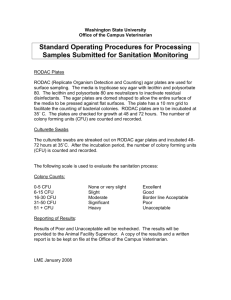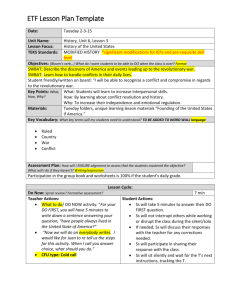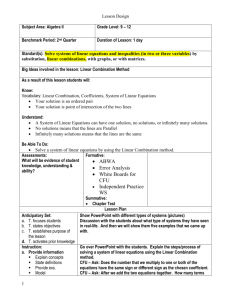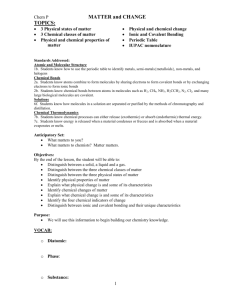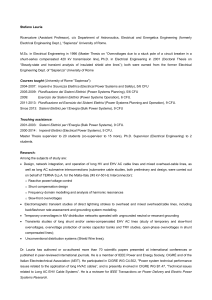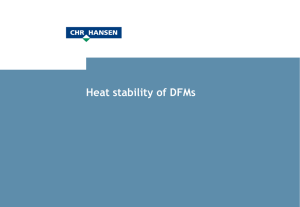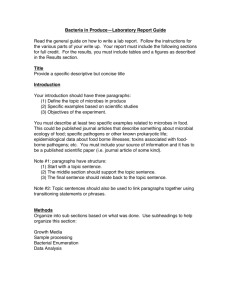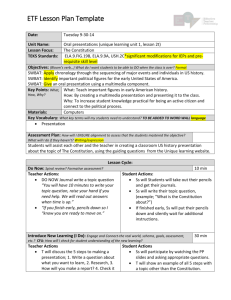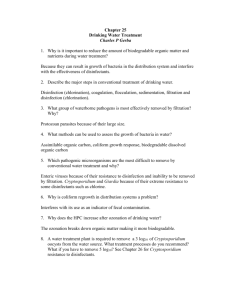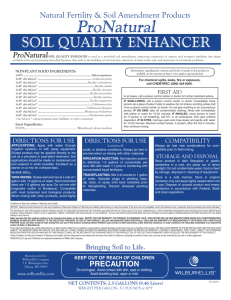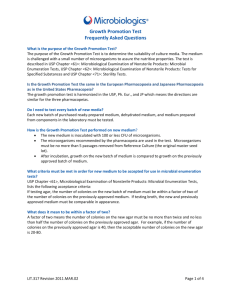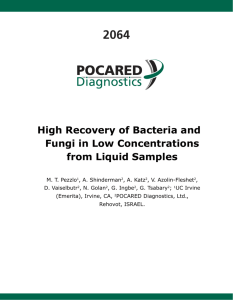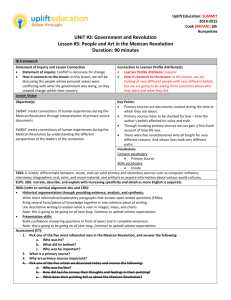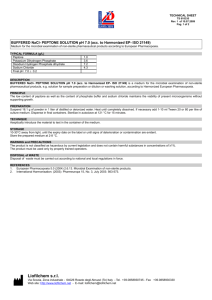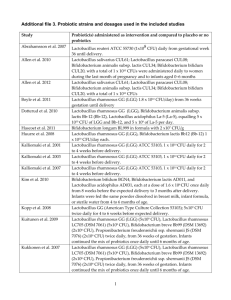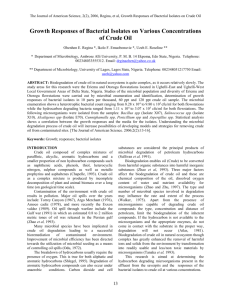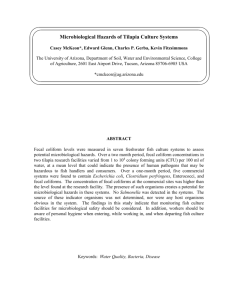VibrioOA
advertisement
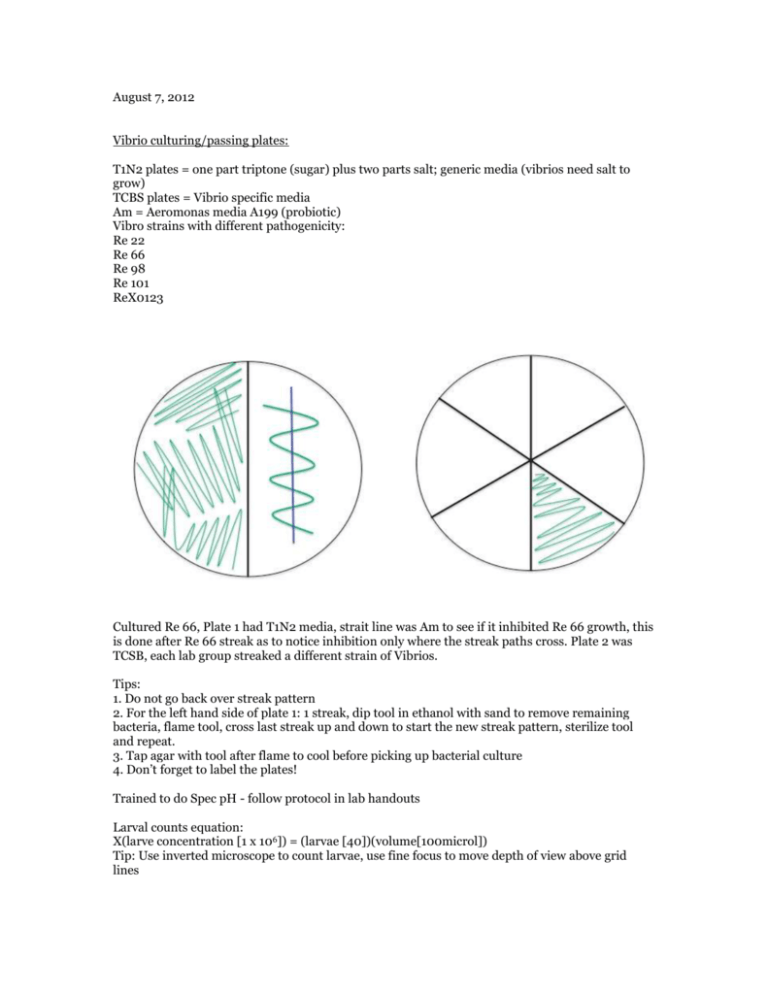
August 7, 2012 Vibrio culturing/passing plates: T1N2 plates = one part triptone (sugar) plus two parts salt; generic media (vibrios need salt to grow) TCBS plates = Vibrio specific media Am = Aeromonas media A199 (probiotic) Vibro strains with different pathogenicity: Re 22 Re 66 Re 98 Re 101 ReX0123 Cultured Re 66, Plate 1 had T1N2 media, strait line was Am to see if it inhibited Re 66 growth, this is done after Re 66 streak as to notice inhibition only where the streak paths cross. Plate 2 was TCSB, each lab group streaked a different strain of Vibrios. Tips: 1. Do not go back over streak pattern 2. For the left hand side of plate 1: 1 streak, dip tool in ethanol with sand to remove remaining bacteria, flame tool, cross last streak up and down to start the new streak pattern, sterilize tool and repeat. 3. Tap agar with tool after flame to cool before picking up bacterial culture 4. Don’t forget to label the plates! Trained to do Spec pH - follow protocol in lab handouts Larval counts equation: X(larve concentration [1 x 106]) = (larvae [40])(volume[100microl]) Tip: Use inverted microscope to count larvae, use fine focus to move depth of view above grid lines August 8, 2012 Dilutions: with Am and Re 22Vt after 24 hours: growth at RT (~22C) ~ 3.0 x 109 cfu/mL cfu = colony forming units Adding 100 microliters to the well... (3.0 x 109)(0.1 mL) = 3.0 x 108 cfu/mL 3.0 x 108 cfu/mL / 4.0 mL SW = 7.5 x 107 cfu/mL original culture: 7.5 x 107 cfu/mL (-1) 1:10 dilution = 7.5 x 106 cfu/mL (-2) 1:10 dilution = 7.5 x 105 cfu/mL (-3) 1:10 dilution = 7.5 x 104 cfu/mL Am after 24 hr at 37C ~ 1.5 x 108 cfu/mL 1.5 x 108 x 0.1 = 1.5 x 107 cfu/mL 1.5 x 107/4.0 = 3.76 x 106 / 100 (2 dilutions) = 3.75 x 104 cfu/mL Larval counts Ambient stock = 2.65 x 103/mL = 2.65/microliters 2000 stock = 3.15 larvae/microliter (x volume have)(concentration want) = (volume want)(concentration want) x(2.65 x 103/mL) = 2mL(400/mL) x = 301.89 microliter larvae *Plus 2000-302 H2O August 9, 2012 Gram stain for Serum Agglutination Test and Azocasein Protease Assay following lab protocol: Serum Agglutination Test 1. Add 50 uL of sterile seawater and 25 uL of your culture to one slide (control) 2. To one slide (your test slide) add 25 uL of sterile seawater and 25 uL of your culture and 25uL of the thawed polyclonal antibody. 3. Gently mix solutions on both slides with sterile pipet tips (gently suck up and down) 4. Incubate at room temperature for 5 mins 5. View at 10x or 4x on the scope to compare degree of agglutination of the cells More agglutination in test slide 1. Azocasein Protease Assay (R. Elston protocol, Aquatechnics) 2. Pick any suspicious yellow colonies off TCBS plates (test green ones too so you have a negative control for the azocasein) 3. Grow colony in 5ml marine broth culture tube overnight (Lisa has done for you) 4. Test for protease: i. Centrifuge culture tubes at 26,000 rpm for 10 min at 4C ii. Remove 100 μl of supernatant and add to a microcentrifuge tube (discard the rest of the pellet and culture supernatant) iii. Add 400 μl of 1% azocasein iv. Incubate for 30 min at 37°C v. Stop reaction by adding 600 μl of 10% trichloric acetic acid (TCA) vi. Incubate on ice for 30 min vii. Centrifuge at 13,000 rpm for 5 min viii. Add 200 μl of 1.8 N NaOH to a new microcentrifuge tube ix. Add 800 μl of the reaction supernatant to the tube with the NaOH x. The supernatant will turn an extremely bright and obvious orange upon a positive result for the protease, it will remain whatever color the supernatant was (not always clear, might have slight yellowish tint) if it is negative for the protease -Assessed living/dead oyster larvae in all treatments Strain Hrs Well # Dead Total Live Proportion survival X00123 24 Control 1 0 X00123 24 Control 2 0 X00123 24 Control 3 1 X00123 24 10^4 1 2 X00123 24 10^4 2 0 X00123 24 10^4 3 0 X00123 24 10^5 4 5 X00123 24 10^5 5 2 X00123 24 10^5 6 1 X00123 24 10^6 7 2 X00123 24 10^6 8 2 X00123 24 10^6 9 3 X00123 24 Vt10^5/Am10^6 10 2 X00123 24 Vt10^6/Am10^6 11 1 X00123 24 Am only 12 4 observations: oysters in control are VERY active- zipping around all over the well, while many larvae in bacterial treatments are moving slowly or not at all, with only signs of life streaming or cilia within cell, gastric contractions. No signs of bacterial swarming.
